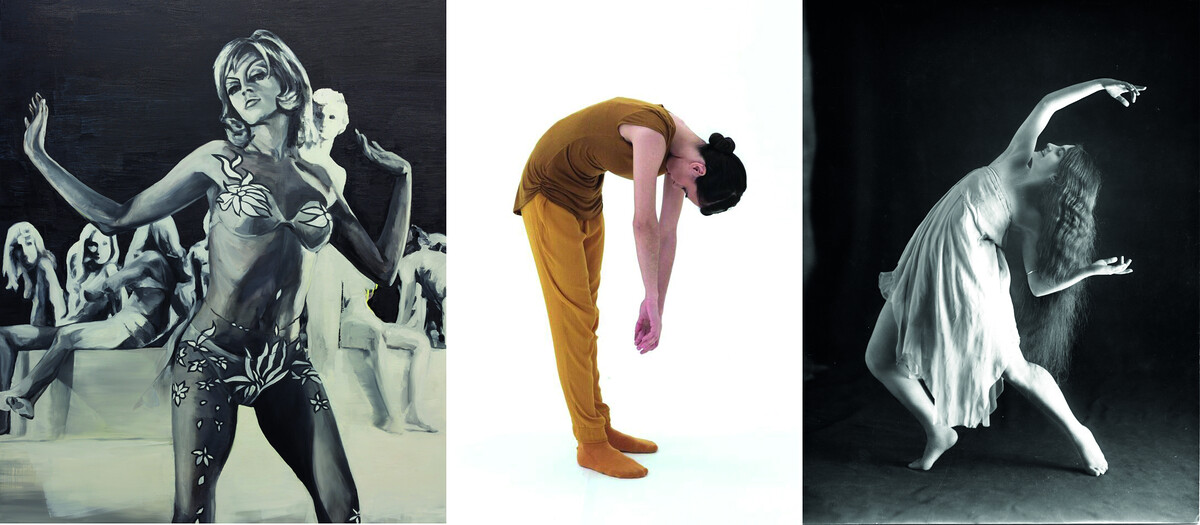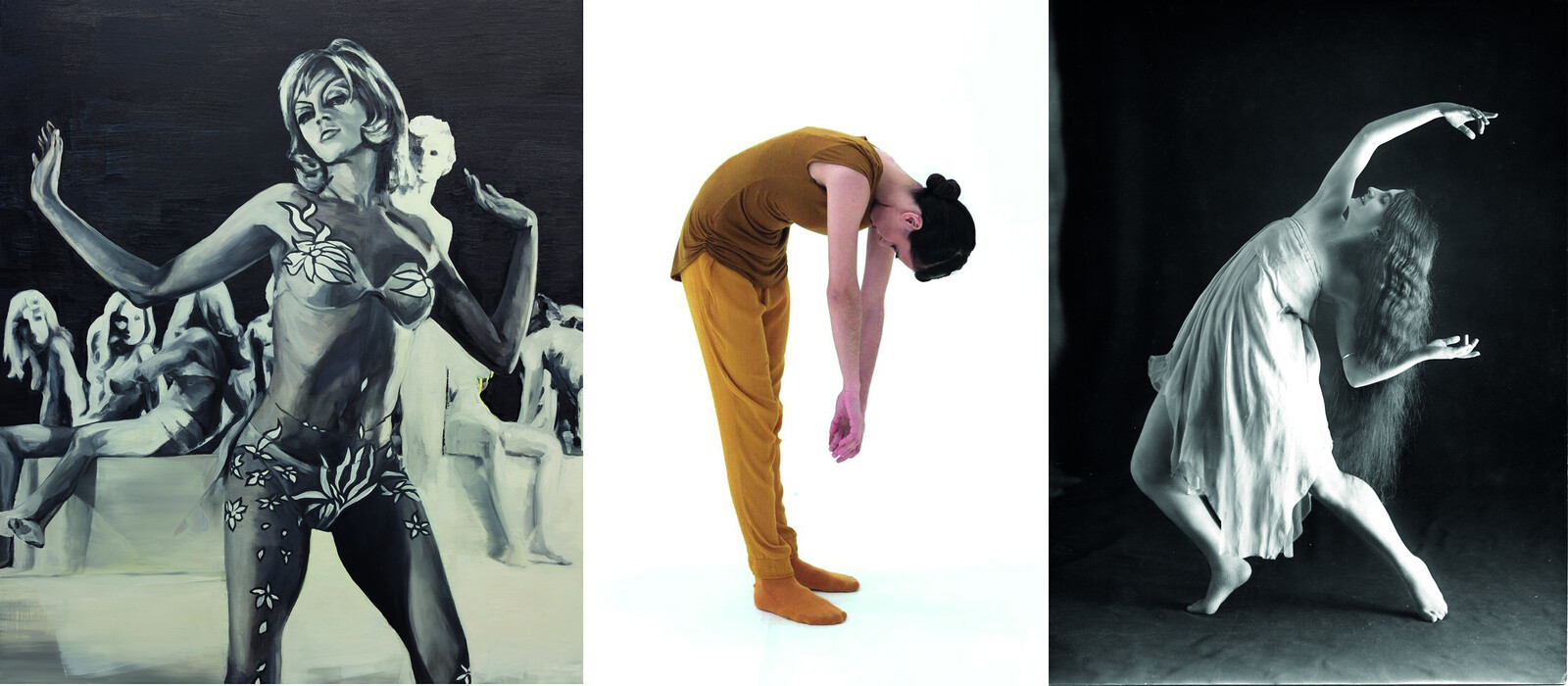Staging the Derra de Moroda Dance Archives
March 19–July 3, 2016
Mönchsberg
Mönchsberg 32
5020 Salzburg
Austria
Hours: Tuesday–Sunday 10am–6pm,
Wednesday 10am–8pm
T +43 662 842220403
info@mdmsalzburg.at
A unique interdisciplinary project at the Museum der Moderne Salzburg brings the University of Salzburg’s Derra de Moroda Dance Archives to life by presenting its treasures in an encounter with works by contemporary artists. It is the first time the museum has commissioned a considerable number of new works to be produced for presentation in one of its exhibitions.
A grand special exhibition on the spacious level [4] of the Museum der Moderne Salzburg’s Mönchsberg building explores modernist dance culture and its impact on contemporary art. The show was inspired by the Derra de Moroda Dance Archives, which have been at the University of Salzburg since 1978 and have emerged as a treasure chest of cultural memory and center for dance research and documentation as well as the dissemination of knowledge about dance culture of global significance. “I believe it is important to open the museum’s doors to a critical examination of the modernist legacy and a multidisciplinary understanding of art. This unique archive was an ideal backdrop for a contemporary artistic reflection on dance and its role in the art museum,” Sabine Breitwieser, the museum’s director and leader of the project team that conceived the exhibition, emphasizes. The archive is named after its founder, Friderica Derra de Moroda (1897 Bratislava, Slovakia—1978 Salzburg). As Breitwieser’s collaborators, the dance scholars Irene Brandenburg, Nicole Haitzinger, and Claudia Jeschke (University of Salzburg) note, Derra de Moroda’s “work as an artist, pedagogue, choreographer, and scholar makes her a central figure in the history of twentieth-century dance.” The show interweaves two distinct expositions: selected artifacts from the archives are on display in five thematic galleries that frame ten new works by contemporary artists the Museum der Moderne commissioned specifically for the project.
In the 1920s—she was living in London at the time—Derra de Moroda started systematically collecting a wide variety of dance-related documents, laying the foundations for one of the earliest archives of its kind in Europe. The extensive collection now includes published materials on dance and neighboring fields from six centuries—books, photographs, and notations as well as sheet music, librettos, autograph letters, journals, magazines, a sizable assortment of iconographic sources, and digital media. The exhibition surveys the dance culture of the 1920s and 1930s—the central decades of Derra de Moroda’s career and the focus of her collection—in four thematic divisions: multimedia dance, national and international correspondences, exotic dances, and modern dance designs. A fifth room is dedicated to Derra de Moroda herself.
The exhibition presents focused arrangements of selections from the archives in dialogue with works by ten contemporary artists from six countries they inspired. The spectrum of media ranges from painting, drawing, and collage across video and sound installations to performance art.
A book Jonathan Burrows (1960 Bishop Auckland—Lewes, UK) found in the archives, Hans Brandenburg’s study Der moderne Tanz (The modern Dance), is the point of departure for a performance and installation that spotlights the difficulty of archiving dance. To celebrate the opening of the exhibition, the British artist will stage a live performance also featuring the dancer Claire Godsmark and the composer and pianist Matteo Fargion. Philipp Gehmacher (1975 Salzburg—Vienna) presents a sculptural intervention that plays on his idea of the “gray room” as a hybrid between white cube and black box. The drawings and collages of Ania Soliman (1970 Warsaw—Paris and New York) reflect on the quest for new forms of expression and ways to convey the effect of a performance in what is called (dance) modernism. Research-based mind maps and a performance by Lia Perjovschi (1961 Sibiu, Romania) make explicit reference to specific aspect of modernism as it appears in the Derra de Moroda Archives. In the sound piece Love Letters to Valeska, Eszter Salamon (1970 Budapest—Berlin and Paris) conducts an imaginary correspondence with Valeska Gert, a Jewish dancer active in the 1920s. The interplay between spoken language and the language articulated in dance, especially with a view to Friderica Derra de Moroda’s work as the director of the Kraft durch Freude propaganda ballet in the 1940s, is explored in the three-channel video installation Truly Spun Never by Andrea Geyer (1971 Freiburg, Germany—New York). The drawings of Ulrike Lienbacher (1963 Oberndorf / Salzburg—Salzburg and Vienna) scrutinize the ephemeral quality of movement, translating it into a traditional medium. Systems of notation and the graphic recording as a medium for the dissemination of dance are also the subject of the new video installation by Kelly Nipper (1971 Edina, Minnesota—Boston). The expansive installation by the American artist and composer Sergei Tcherepnin (1981 Boston—New York), which balances on the dividing lines between music, composition, and visual art, uses touch-sensitive surfaces to build a rapport between the exhibits and the visitor. The concept of the archive and the idea of collecting are at the core of the paintings and collages in which Paulina Olowska (1975 Gdańsk—Mszana Dolna, Poland), who also designed the motif for the exhibition poster, draws a connection to Poland and 1960s popular dance.
Project Director: Sabine Breitwieser
Project Partners: Irene Brandenburg, Nicole Haitzinger, Claudia Jeschke, Universität Salzburg
Curatorial Assistants: Andrea Lehner, Verena Österreicher
Exhibition architecture and design: Kuehn Malvezzi
Visit the website of the exhibition
Related programming
Der Moderne Tanz (The Modern Dance)
March 19, 12pm
Performance by Jonathan Burrows (choreography), Matteo Fargion (piano) and Claire Godsmark (dance)
Mönchsberg [4], free admission
Artists talk
March 19, 3pm
With Sabine Breitwieser, Director Museum der Moderne Salzburg; Sigrid Gareis, Curator, Dramaturge, Founding Director Tanzquartier Wien; Claudia Jeschke, Professor em., Paris-Lodron-Universität Salzburg and Felicitas Thun-Hohenstein, Professor, Academy of Applied Arts Vienna
Mönchsberg Auditorium
Alexander and Clotilde von Sacharoff: “Materialien des Tanzes“ (Materials of dance)
May 8, 2pm and
May 22, 2pm
Lecture performance with Nefeli Kadinopoulou-Asteriou, Sami Similä, choreographer and dancer from SEAD’s BODHI PROJECT and Claudia Jeschke, Professor em., Paris-Lodron-Universität Salzburg
Mönchsberg [4]
Presented at the same time:
Affichomanie
Toulouse-Lautrec and the Poster around 1900
Mönchsberg [3]
March 12–July 10, 2016
The Museum der Moderne Salzburg presents a major exhibition of works by the pioneers and preeminent representatives of poster art around 1900. The show will feature over a hundred exhibits, including lithographs from the museum’s own collections by groundbreaking artists such as Henri de Toulouse-Lautrec, Oskar Kokoschka, and Egon Schiele.
This exhibition is held in cooperation with the Sprengel Museum, Hannover.
Director: Sabine Breitwieser
Curator: Beatrice von Bormann, Head of Collection, Museum der Moderne Salzburg
Assistant Curator: Barbara Herzog, Museum der Moderne Salzburg
In conjunction with the exhibition a catalogue is published.

